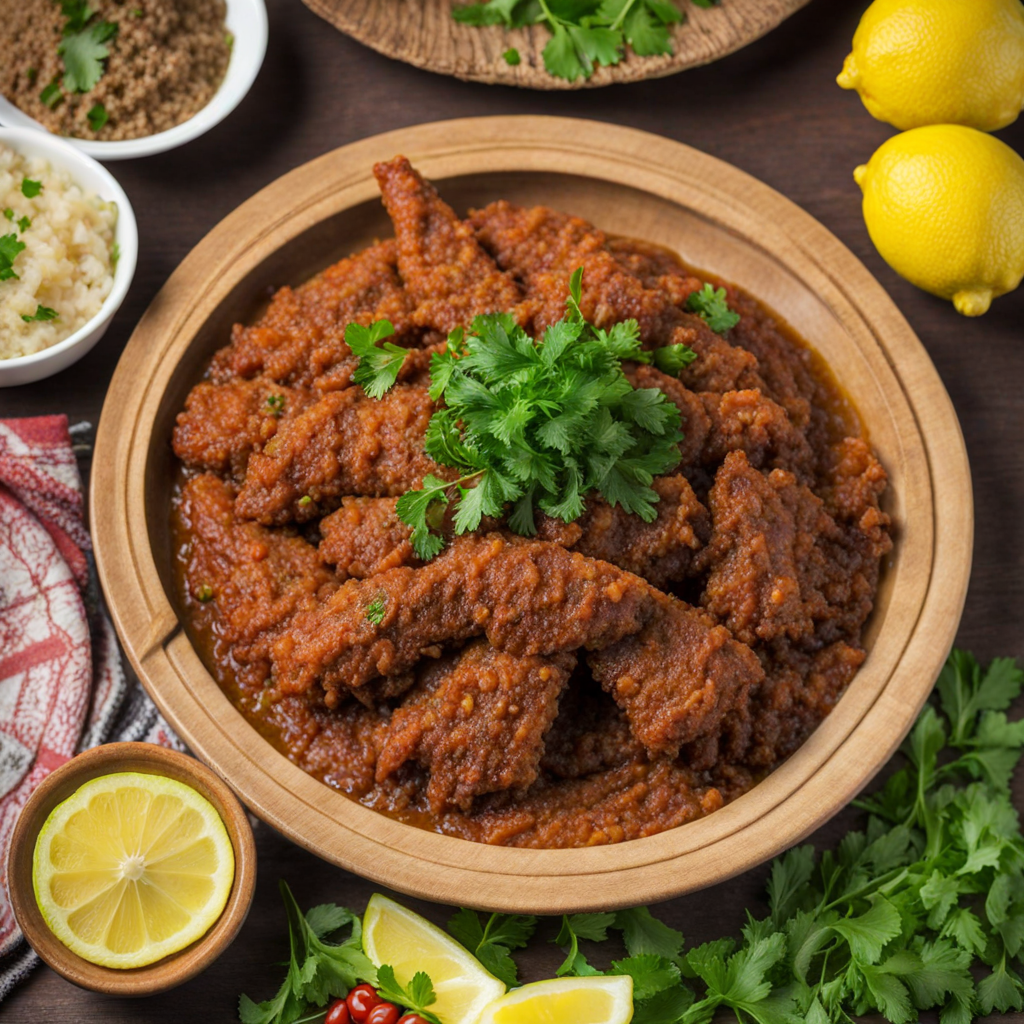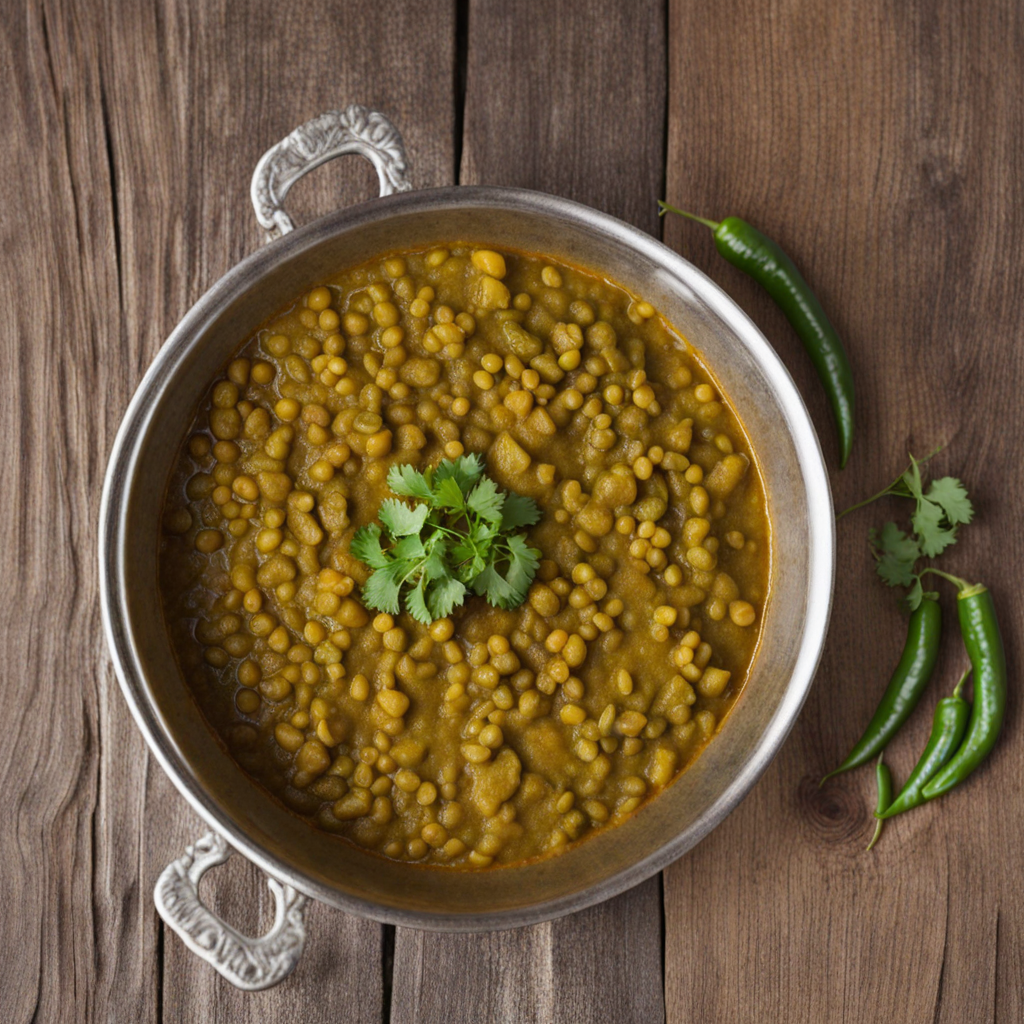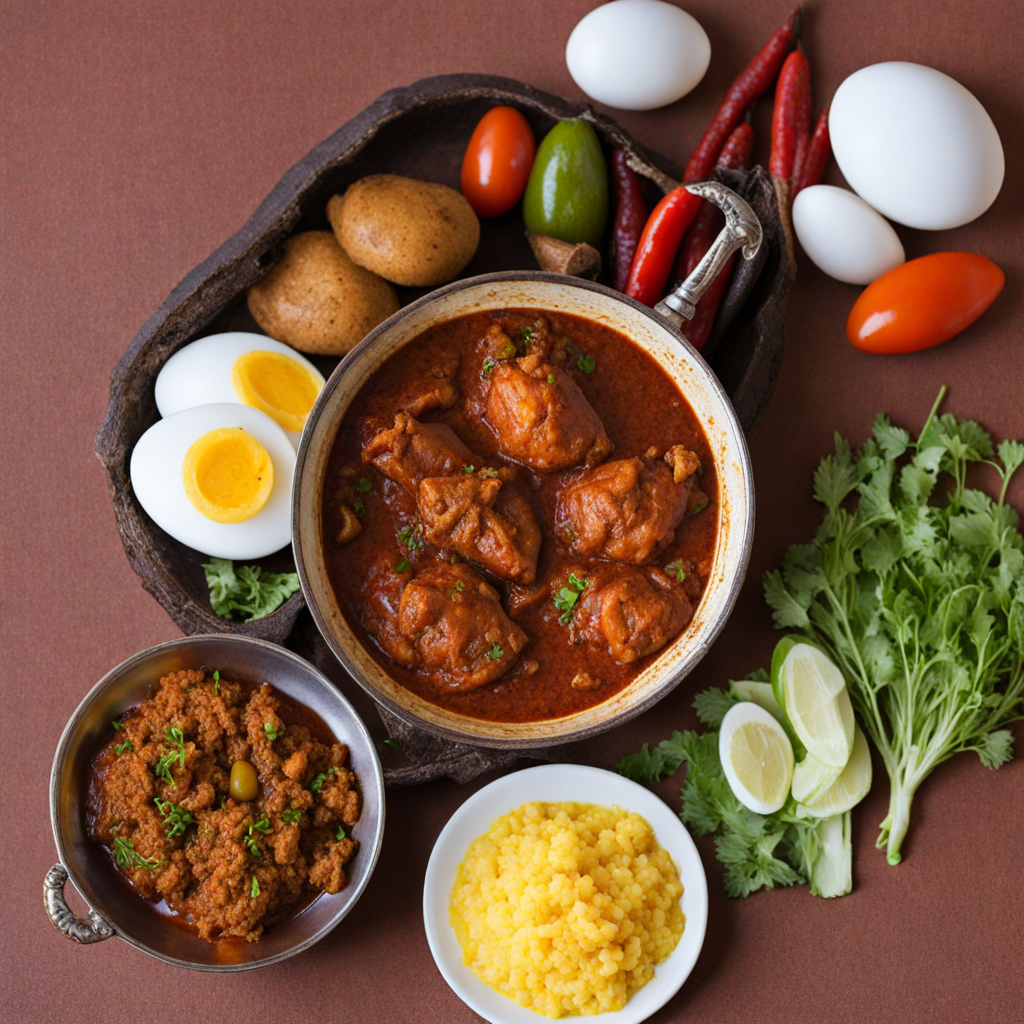Sambusa
Sambusa is a delightful Ethiopian pastry that captures the essence of traditional flavors wrapped in a crispy shell. These savory pastries are typically filled with a variety of ingredients, including spiced lentils, minced meat, or a medley of vegetables, offering a burst of flavor with each bite. The dough is expertly prepared, thin and flaky, ensuring a satisfying crunch that contrasts beautifully with the rich, aromatic fillings. The spices used in the filling, such as cumin, coriander, and turmeric, not only enhance the taste but also reflect the vibrant culinary heritage of Ethiopia. The preparation of sambusa often involves frying, which gives it a golden-brown exterior that is irresistibly inviting. Street vendors and home cooks alike take pride in their sambusa, often serving them as a popular snack during festivals or family gatherings. The aroma of freshly fried sambusa wafts through the air, drawing people in with its tantalizing scent. Each bite provides a delightful combination of textures and flavors, from the crispiness of the outer shell to the flavorful, warm filling inside. Sambusa is not just a treat for the taste buds but also a social food, often enjoyed in the company of friends and family. It pairs well with various condiments, such as spicy dipping sauces or tangy yogurt, enhancing the overall experience. Whether you enjoy them as an appetizer, a snack, or part of a larger meal, sambusa serves as a delicious introduction to Ethiopian cuisine, showcasing the country's rich traditions and culinary prowess.
How It Became This Dish
The History of ሳምቡሳ (Sambusa) in Ethiopia #### Origins The story of ሳምቡሳ (sambusa) in Ethiopia is a rich tapestry woven through centuries of cultural exchange and adaptation. Sambusa, a deep-fried or baked pastry filled with a variety of ingredients, is thought to have roots in the Middle East and South Asia. Its origin can be traced back to the 10th century or even earlier, where similar pastries were enjoyed in Arab cuisine. The name itself is derived from the Arabic word "sambusak," which refers to the triangular shape of the pastry. As trade routes flourished across the Arabian Peninsula and the Horn of Africa, culinary practices began to intermingle. As merchants and travelers carried spices and recipes across borders, sambusa found its way into Ethiopian kitchens. Ethiopian sambusas are often filled with lentils, vegetables, or minced meat, reflecting the country's agricultural bounty and diverse culinary traditions. #### Cultural Significance In Ethiopia, sambusa is more than just a snack; it is a symbol of communal sharing and celebration. Traditionally prepared for special occasions, such as weddings, religious holidays, and festive gatherings, sambusas are emblematic of Ethiopian hospitality. The act of sharing sambusas with family and friends is an expression of unity and joy. Ethiopia is a nation with a rich mosaic of ethnicities and cultures, and sambusas have adapted to local tastes and preferences. For instance, in the Somali region, sambusas are often filled with spiced meat and are a staple during Ramadan, serving as an important dish for breaking fast. In contrast, in the Amhara region, vegetarian sambusas made with lentils or vegetables are common, particularly during fasting periods in the Ethiopian Orthodox calendar. #### Ingredients and Preparation The preparation of sambusa varies widely across Ethiopia and is influenced by regional ingredients and dietary customs. The pastry dough is typically made from flour and water, rolled out into thin sheets, and then cut into triangles. The filling is often a mélange of spices, reflecting the unique flavor profiles of Ethiopian cuisine. Common fillings include: - Lentils: Often spiced with berbere, a traditional Ethiopian spice blend, lentils provide a hearty, nutritious vegetarian option. - Ground Meat: Minced beef or lamb mixed with onions, garlic, and spices create a savory filling that is popular during celebrations. - Vegetables: A mixture of seasonal vegetables, often sautéed with spices, offers a fresh and colorful filling. The process of folding the sambusa to enclose the filling requires skill and practice. Once filled, the pastries can be deep-fried until golden brown and crispy, or baked for a healthier alternative. The end result is a delightful treat with a flaky exterior and a flavorful filling that embodies the essence of Ethiopian culinary tradition. #### Development Over Time As Ethiopia modernized and globalized in the 20th and 21st centuries, sambusa evolved while retaining its traditional essence. The expansion of urban centers led to the rise of street food culture, where sambusas became a popular on-the-go snack for busy city dwellers. Street vendors often offer sambusas in various forms, catering to both traditional and contemporary palates. The diaspora of Ethiopians around the world has further contributed to the evolution of sambusa. In countries like the United States, Canada, and various European nations, Ethiopian restaurants serve sambusa to introduce the flavors of their homeland to a broader audience. As a result, sambusas have become a culinary bridge, connecting Ethiopians with their heritage while also appealing to diverse tastes. In recent years, the rise of food blogs and social media has allowed for the sharing of recipes and cooking techniques, encouraging a new generation of cooks to explore traditional Ethiopian cuisine, including sambusa. Online platforms have become a space for cultural exchange, where individuals can learn how to make sambusa and share their own interpretations. #### Sambusa in Contemporary Culture Today, sambusa continues to hold a special place in Ethiopian culture, representing both tradition and innovation. It is often served at community events, family gatherings, and celebrations, maintaining its status as a beloved dish that brings people together. The versatility of sambusa has also led to creative adaptations, such as fusion versions that incorporate international flavors and ingredients. Moreover, the growing interest in plant-based diets has led to an increase in vegetarian and vegan sambusa options, with fillings made from a variety of vegetables, legumes, and even non-traditional ingredients. This evolution reflects a broader trend in global cuisine, where traditional dishes are reinterpreted to meet contemporary dietary preferences. The sambusa is not merely a food item; it embodies the spirit of Ethiopian culture, symbolizing hospitality, community, and the shared joy of eating together. Its history is a testament to the resilience and adaptability of Ethiopian culinary traditions in the face of globalization and cultural exchange. #### Conclusion The history of sambusa in Ethiopia is a fascinating journey that illustrates the interplay between tradition, cultural significance, and modern adaptation. From its origins in ancient trade routes to its status as a staple in Ethiopian homes and restaurants around the world, sambusa has transcended time and geography. As Ethiopians continue to celebrate their culinary heritage through sambusa, the dish remains a poignant reminder of the connections forged through food—connections that span generations, cultures, and continents. Whether enjoyed at a family gathering, a festive celebration, or a casual street food stall, sambusa embodies the heart of Ethiopian culture and its enduring legacy in the world of cuisine.
You may like
Discover local flavors from Ethiopia







